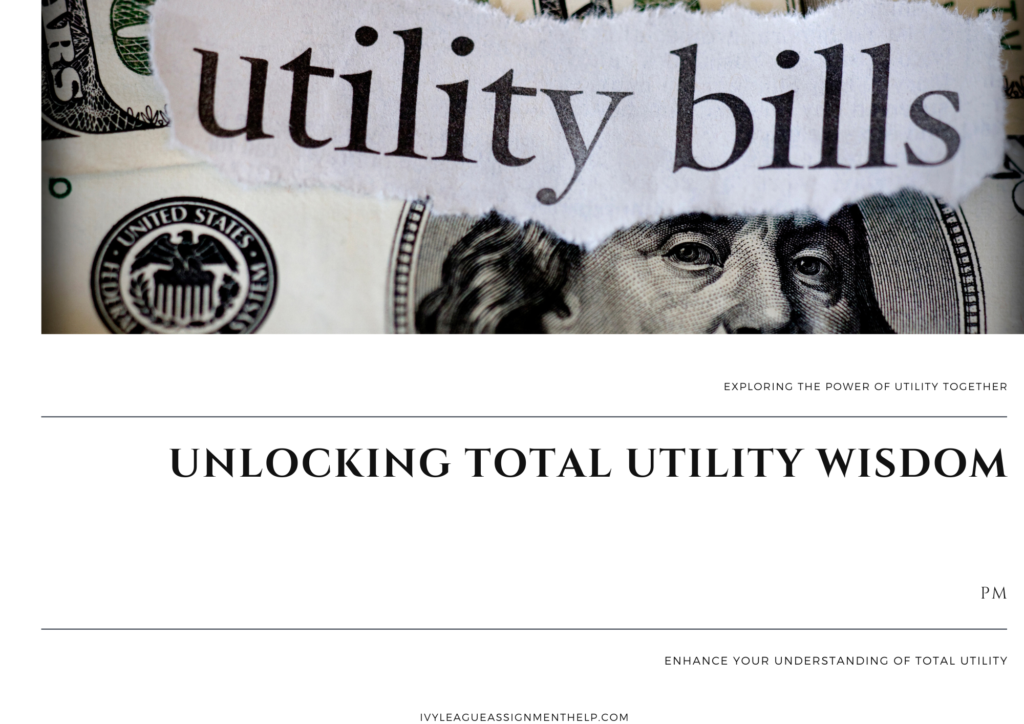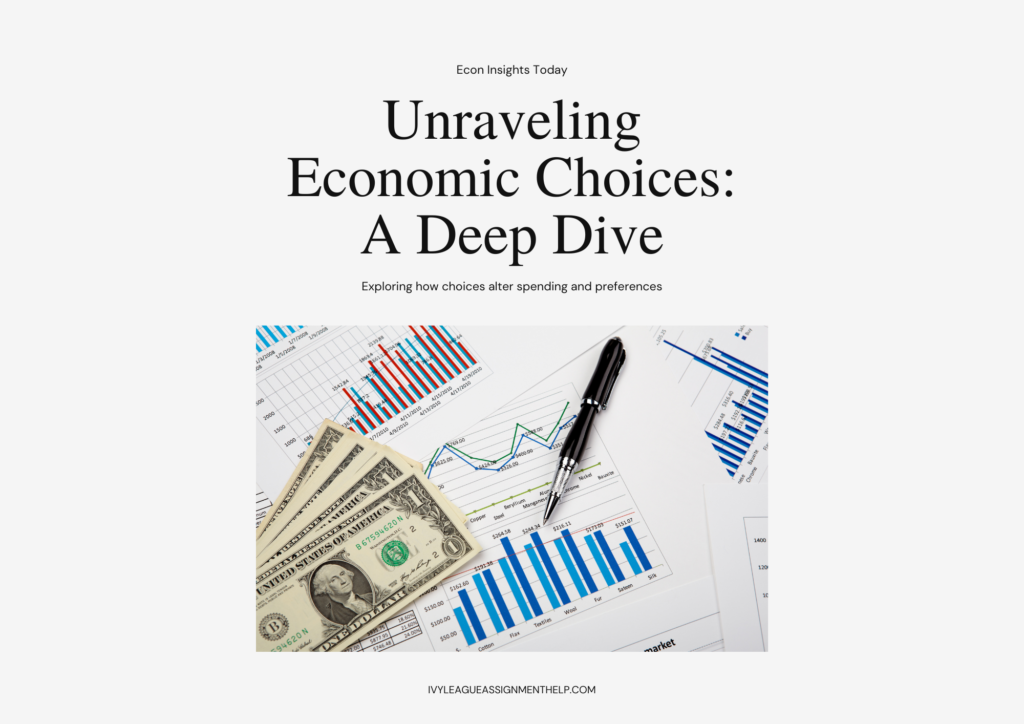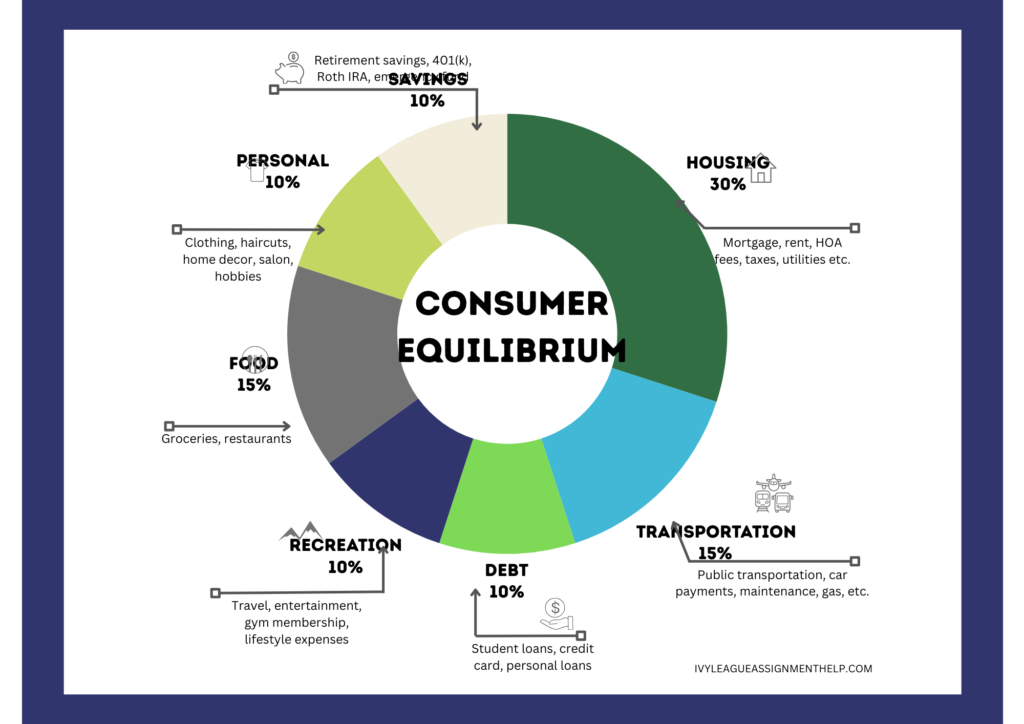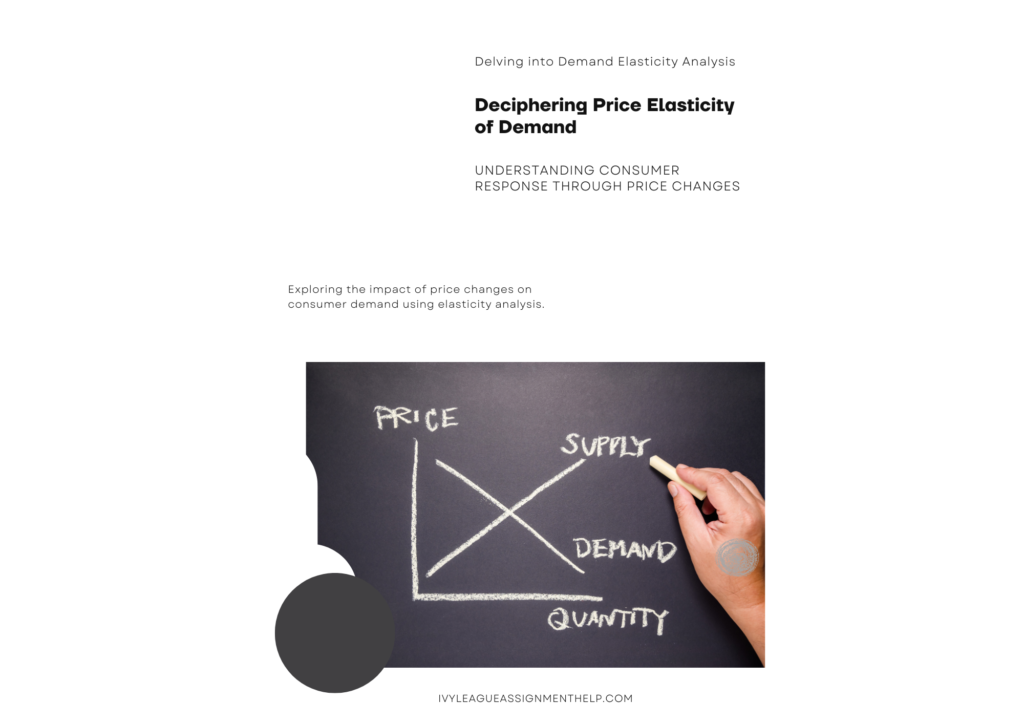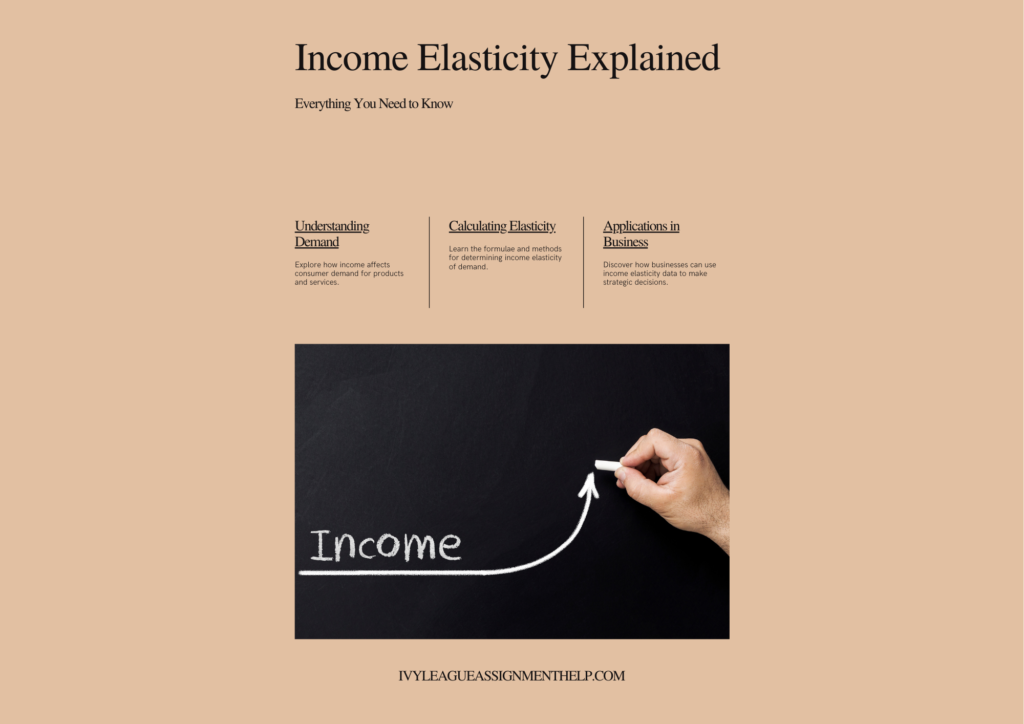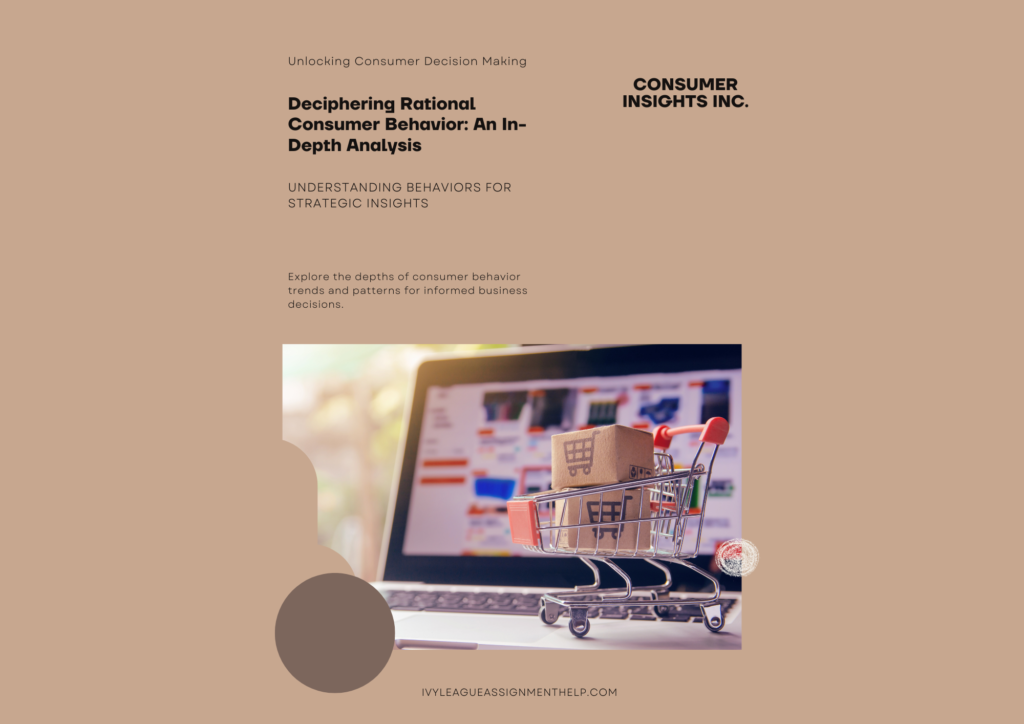The Law of Diminishing Marginal Utility is a fundamental principle in economics that explains how satisfaction from consuming a good or service changes as more units are consumed. At ivyleagueassignmenthelp.com we help and guide students to understand how this concept plays a crucial role in understanding consumer behavior, pricing strategies, and resource allocation.
Key Takeaways
- The Law of Diminishing Marginal Utility states that as consumption increases, the additional satisfaction from each unit decreases
- This principle applies to various aspects of economics, including consumer behavior and pricing strategies
- Understanding this law helps businesses optimize product offerings and pricing
- The concept has limitations and exceptions in certain scenarios
- Real-world applications of the law can be observed in everyday situations
What is the Law of Diminishing Marginal Utility?
The Law of Diminishing Marginal Utility is an economic principle that describes how the satisfaction or benefit derived from consuming additional units of a good or service tends to decrease as more units are consumed. In simpler terms, the more you have of something, the less satisfaction you get from each additional unit.
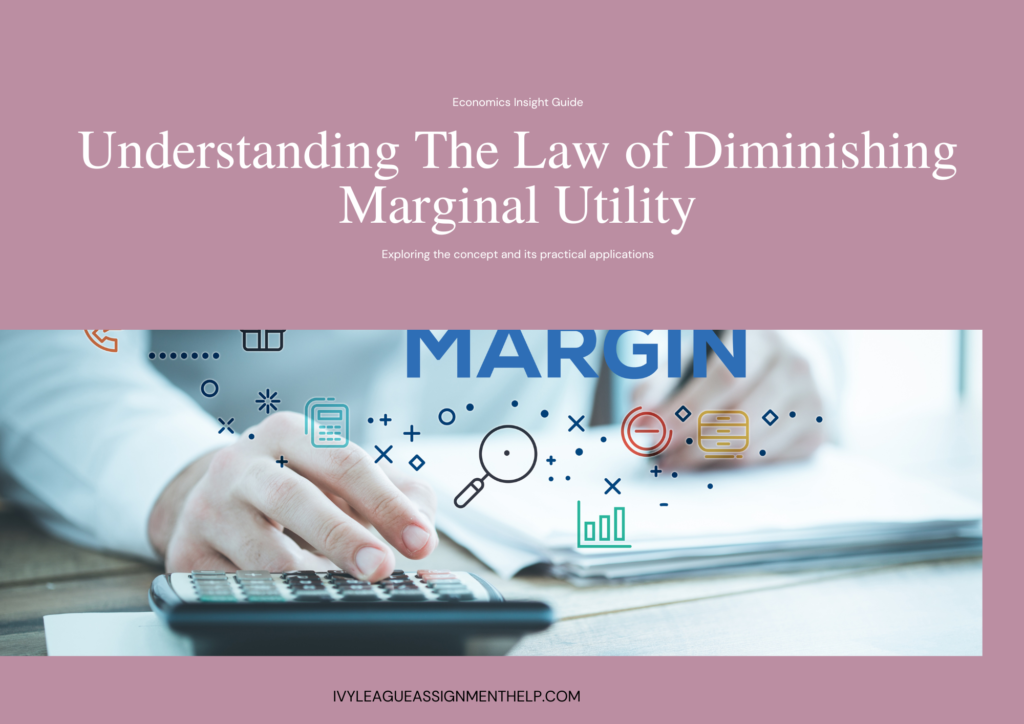
How Does It Work?
To understand the Law of Diminishing Marginal Utility, let’s break it down into its components:
- Utility: The satisfaction or benefit derived from consuming a good or service.
- Marginal Utility: The additional satisfaction gained from consuming one more unit of a good or service.
- Diminishing: The decrease in the additional satisfaction as more units are consumed.
As consumption increases, the marginal utility (additional satisfaction) from each extra unit decreases. This doesn’t mean that total utility decreases, but rather that the rate of increase in total utility slows down.
| Units of Ice Cream | Total Utility (Utils) | Marginal Utility (Utils) |
|---|---|---|
| 1 | 10 | 10 |
| 2 | 18 | 8 |
| 3 | 24 | 6 |
| 4 | 28 | 4 |
| 5 | 30 | 2 |
Explanation
- 1 Unit of Ice Cream:
- Total Utility: 10 utils.
- Marginal Utility: 10 utils.
- 2 Units of Ice Cream:
- Total Utility: 18 utils.
- Marginal Utility: 8 utils.
- 3 Units of Ice Cream:
- Total Utility: 24 utils.
- Marginal Utility: 6 utils.
- 4 Units of Ice Cream:
- Total Utility: 28 utils.
- Marginal Utility: 4 utils.
- 5 Units of Ice Cream:
- Total Utility: 30 utils.
- Marginal Utility: 2 utils.
Implications
- Total Utility: The cumulative satisfaction or utility that a consumer gains from consuming a certain number of units of ice cream. As more ice cream is consumed, the total utility increases, but at a decreasing rate.
- Marginal Utility: The additional satisfaction or utility gained from consuming one more unit of ice cream. Marginal utility diminishes as more units are consumed, reflecting the law of diminishing marginal utility.
- Diminishing Marginal Utility: Each additional unit of ice cream provides less additional utility than the previous one. For example, the marginal utility decreases from 10 utils for the first unit to 2 utils for the fifth unit.
Real-World Examples
The Law of Diminishing Marginal Utility can be observed in various everyday situations:
- Food Consumption:
- First slice of pizza: Highly satisfying (10 utils)
- Second slice: Still good, but less exciting (8 utils)
- Third slice: Feeling full, less enjoyment (5 utils)
- Fourth slice: Barely able to finish, minimal pleasure (2 utils)
- Entertainment:
- First hour of video games: Thrilling and engaging (9 utils)
- Second hour: Still fun, but novelty wears off (7 utils)
- Third hour: Enjoyment decreases, fatigue sets in (5 utils)
- Fourth hour: Diminished focus, less satisfaction (3 utils)
- Shopping:
- First pair of shoes: Great excitement and utility (10 utils)
- Second pair: Nice addition to wardrobe (8 utils)
- Fifth pair: Marginal improvement to collection (4 utils)
- Tenth pair: Minimal additional satisfaction (1 util)
Importance in Economics
The Law of Diminishing Marginal Utility is a cornerstone of modern economic theory, with wide-ranging implications for various aspects of economic analysis and decision-making.
Consumer Behavior
This principle helps explain why consumers make certain choices and how they allocate their resources. As the marginal utility of a good decreases, consumers are likely to:
- Diversify their consumption
- Seek alternatives or complementary goods
- Be willing to pay less for additional units
| Cups of Coffee | Willingness to Pay | Marginal Utility |
|---|---|---|
| 1st cup | $5.00 | High (10 utils) |
| 2nd cup | $3.50 | Moderate (7 utils) |
| 3rd cup | $2.00 | Low (4 utils) |
| 4th cup | $0.50 | Very low (1 util) |
Explanation
1st Cup of Coffee
- Willingness to Pay: $5.00
- Marginal Utility: High (10 utils)
The consumer values the first cup of coffee the most, reflected in both the high willingness to pay and the high marginal utility.
2nd Cup of Coffee
- Willingness to Pay: $3.50
- Marginal Utility: Moderate (7 utils)
For the second cup, the willingness to pay and the marginal utility decrease, indicating that the additional satisfaction from the second cup is lower than the first.
3rd Cup of Coffee
- Willingness to Pay: $2.00
- Marginal Utility: Low (4 utils)
The consumer’s willingness to pay further decreases for the third cup, as does the marginal utility, showing that the third cup provides even less additional satisfaction.
4th Cup of Coffee
- Willingness to Pay: $0.50
- Marginal Utility: Very low (1 util)
By the fourth cup, the willingness to pay drops significantly, and the marginal utility is very low, reflecting minimal additional satisfaction from consuming more coffee.
Implications
- Diminishing Marginal Utility: As the number of cups of coffee consumed increases, the marginal utility of each additional cup decreases. This is consistent with the law of diminishing marginal utility.
- Willingness to Pay: The consumer’s willingness to pay for each additional cup decreases as the marginal utility decreases. This relationship helps explain consumer behavior and pricing strategies.
- Consumer Decision-Making: Understanding this concept can aid in predicting how consumers make decisions about purchasing additional units of a good based on the decreasing satisfaction they derive from each additional unit.
Pricing Strategies
Businesses can leverage the Law of Diminishing Marginal Utility to optimize their pricing strategies:
- Quantity Discounts: Offering lower prices for bulk purchases aligns with the decreasing marginal utility for consumers.
- Bundling: Combining products or services can create additional value for consumers who experience diminishing utility from individual items.
- Premium Pricing: For luxury goods, where the law may not apply as strongly, businesses can maintain higher prices for exclusive items.
Example of quantity discounts:
| Quantity | Price per Unit | Total Price |
|---|---|---|
| 1-5 | $10.00 | $10.00 – $50.00 |
| 6-10 | $9.50 | $57.00 – $95.00 |
| 11-20 | $9.00 | $99.00 – $180.00 |
| 21+ | $8.50 | $178.50+ |
Explanation
Quantity: 1-5 Units
- Price per Unit: $10.00
- Total Price: $10.00 – $50.00
For purchases between 1 and 5 units, the price per unit is $10.00, resulting in a total price range from $10.00 (for 1 unit) to $50.00 (for 5 units).
Quantity: 6-10 Units
- Price per Unit: $9.50
- Total Price: $57.00 – $95.00
For purchases between 6 and 10 units, the price per unit decreases to $9.50, resulting in a total price range from $57.00 (for 6 units) to $95.00 (for 10 units).
Quantity: 11-20 Units
- Price per Unit: $9.00
- Total Price: $99.00 – $180.00
For purchases between 11 and 20 units, the price per unit decreases further to $9.00, resulting in a total price range from $99.00 (for 11 units) to $180.00 (for 20 units).
Quantity: 21+ Units
- Price per Unit: $8.50
- Total Price: $178.50+
For purchases of 21 or more units, the price per unit is $8.50, and the total price starts at $178.50 for 21 units and increases based on the number of additional units purchased.
Implications
- Bulk Pricing: This table illustrates the concept of bulk pricing, where the unit price decreases as the quantity purchased increases, providing an incentive for buyers to purchase in larger quantities.
- Cost Savings: Buyers can achieve cost savings by purchasing larger quantities, as the price per unit decreases.
- Pricing Strategy: The seller’s pricing strategy aims to encourage higher volume purchases by offering lower unit prices for larger quantities.
Resource Allocation
The principle also guides how individuals and societies allocate resources:
- It encourages a more balanced distribution of goods and services
- It influences production decisions by suggesting that producing too much of a single good may not be optimal
Example of resource allocation based on diminishing marginal utility:
| Resource | 1st Unit | 2nd Unit | 3rd Unit | 4th Unit |
|---|---|---|---|---|
| Food | High (10) | High (9) | Moderate (7) | Low (4) |
| Clothing | High (9) | Moderate (7) | Low (5) | Very Low (2) |
| Entertainment | Moderate (7) | Moderate (6) | Low (4) | Very Low (2) |
Explanation
Food
- 1st Unit: High marginal utility (10)
- 2nd Unit: High marginal utility (9)
- 3rd Unit: Moderate marginal utility (7)
- 4th Unit: Low marginal utility (4)
Food has the highest initial marginal utility, but as more units are consumed, the additional satisfaction decreases, reflecting diminishing marginal utility.
Clothing
- 1st Unit: High marginal utility (9)
- 2nd Unit: Moderate marginal utility (7)
- 3rd Unit: Low marginal utility (5)
- 4th Unit: Very low marginal utility (2)
Clothing starts with high marginal utility, but the decrease in marginal utility is more pronounced compared to food, dropping to very low levels by the fourth unit.
Entertainment
- 1st Unit: Moderate marginal utility (7)
- 2nd Unit: Moderate marginal utility (6)
- 3rd Unit: Low marginal utility (4)
- 4th Unit: Very low marginal utility (2)
Entertainment begins with moderate marginal utility and sees a steady decline, ending with very low marginal utility by the fourth unit.
Implications
- Diminishing Marginal Utility: This principle is evident across all resources, with each additional unit consumed providing less additional satisfaction than the previous one.
- Resource Allocation: Consumers aim to maximize their total utility by allocating resources in a way that balances the diminishing marginal utility across different goods. For example, after consuming a high-utility unit of food, a consumer might switch to clothing or entertainment to maximize overall satisfaction.
- Consumer Choice: Understanding the marginal utility of different resources helps consumers make informed decisions about their consumption patterns, aiming to derive the highest total utility from their available resources.
Limitations and Exceptions
While the Law of Diminishing Marginal Utility is widely applicable, it’s important to recognize its limitations and exceptions:
- Addictive Substances: In cases of addiction, marginal utility may initially increase rather than decrease.
- Collector’s Items: For collectors, the marginal utility of acquiring additional items in a set may increase.
- Money: The marginal utility of money often doesn’t diminish as quickly as that of consumer goods.
- Time-Dependent Goods: Some goods may have increasing marginal utility in certain time frames (e.g., umbrellas during a rainstorm).
Example of exceptions to the law:
| Item | 1st Unit | 2nd Unit | 3rd Unit | 4th Unit |
|---|---|---|---|---|
| Addictive Substance | Moderate (5) | High (8) | Very High (10) | Very High (10) |
| Collector’s Item | High (8) | Higher (9) | Very High (10) | Extremely High (12) |
| Money ($1000 increments) | High (10) | High (9.5) | High (9) | High (8.5) |
Explanation
Addictive Substance
- 1st Unit: Moderate marginal utility (5)
- 2nd Unit: High marginal utility (8)
- 3rd Unit: Very high marginal utility (10)
- 4th Unit: Very high marginal utility (10)
The marginal utility of an addictive substance increases with each additional unit, peaking at very high levels and remaining constant, reflecting the nature of addiction where the satisfaction or craving increases and sustains with consumption.
Collector’s Item
- 1st Unit: High marginal utility (8)
- 2nd Unit: Higher marginal utility (9)
- 3rd Unit: Very high marginal utility (10)
- 4th Unit: Extremely high marginal utility (12)
For a collector’s item, the marginal utility increases with each additional unit, reaching extremely high levels. This pattern can be attributed to the increasing satisfaction and perceived value collectors derive from adding more unique or rare items to their collection.
Money ($1000 increments)
- 1st Unit: High marginal utility (10)
- 2nd Unit: High marginal utility (9.5)
- 3rd Unit: High marginal utility (9)
- 4th Unit: High marginal utility (8.5)
The marginal utility of money decreases slightly with each additional $1000 increment, remaining high overall. This reflects the utility derived from money, where each additional increment is still valuable but slightly less so than the previous one, demonstrating a less steep diminishing marginal utility compared to other items.
Implications
- Addictive Substance: The increasing and sustained high marginal utility indicates the reinforcing nature of addictive substances, leading to continuous consumption and potential dependence.
- Collector’s Item: The rising marginal utility highlights the growing satisfaction and value for collectors as they acquire more items, which can lead to a high willingness to pay for subsequent units.
- Money: The high but gradually decreasing marginal utility suggests that while additional money remains valuable, its incremental utility diminishes, emphasizing the importance of money in fulfilling various needs but with diminishing returns.
By understanding these real-world applications, limitations, and exceptions of the Law of Diminishing Marginal Utility, students and professionals can gain valuable insights into consumer behavior, market dynamics, and economic decision-making. This knowledge is essential for developing effective strategies in business, policy-making, and personal financial management.
Measuring Marginal Utility
Quantifying marginal utility can be challenging due to its subjective nature. However, economists have developed several approaches to measure and analyze it:
- Cardinal Utility: Assigning numerical values to utility (e.g., utils)
- Ordinal Utility: Ranking preferences without assigning specific numerical values
- Revealed Preference Theory: Inferring utility from observed consumer choices
Applications in Behavioral Economics
Recent developments in behavioral economics have expanded our understanding of the Law of Diminishing Marginal Utility:
- Prospect Theory: Developed by Daniel Kahneman and Amos Tversky, this theory suggests that people value gains and losses differently, which can affect how marginal utility is perceived.
- Hedonic Adaptation: The tendency for people to quickly return to a relatively stable level of happiness despite major positive or negative events or life changes.
Example of Prospect Theory in action:
| Scenario | Gain/Loss | Perceived Utility Change |
|---|---|---|
| Winning $100 | Gain | +5 utils |
| Losing $100 | Loss | -7 utils |
| Winning $200 | Gain | +8 utils |
| Losing $200 | Loss | -12 utils |
Explanation
Winning $100
- Gain: The scenario of winning $100 results in a perceived utility increase of +5 utils.
Losing $100
- Loss: The scenario of losing $100 results in a perceived utility decrease of -7 utils.
Winning $200
- Gain: The scenario of winning $200 results in a perceived utility increase of +8 utils.
Losing $200
- Loss: The scenario of losing $200 results in a perceived utility decrease of -12 utils.
Implications
- Loss Aversion: The table illustrates the concept of loss aversion, where losses are perceived more negatively than equivalent gains are perceived positively. For instance, losing $100 results in a larger perceived utility change (-7 utils) than the gain of $100 (+5 utils).
- Non-linear Perception: The perceived utility changes are not linear. For example, winning $200 results in an increase of +8 utils (less than double the utility of winning $100), while losing $200 results in a decrease of -12 utils (more than double the disutility of losing $100).
- Behavioral Economics: This demonstrates a key principle in behavioral economics, where individuals’ decisions are influenced by their perceptions of gains and losses rather than the actual monetary values alone.
Practical Applications of the Law
Understanding the Law of Diminishing Marginal Utility has numerous practical applications in various fields:
Marketing and Product Development
Marketers use this principle to:
- Create product lines with different features and price points
- Develop complementary products to offset diminishing utility
- Design loyalty programs that provide increasing benefits
Example of a tiered loyalty program:
| Tier | Spending Required | Benefits |
|---|---|---|
| Bronze | $0 – $500 | 5% discount on purchases |
| Silver | $501 – $1000 | 10% discount + free shipping |
| Gold | $1001 – $2000 | 15% discount + free shipping + exclusive products |
| Platinum | $2001+ | 20% discount + free shipping + exclusive products + concierge service |
Explanation
Bronze Tier
- Spending Required: $0 – $500
- Benefits:
- 5% discount on purchases.
The Bronze tier offers a modest discount for customers spending up to $500.
Silver Tier
- Spending Required: $501 – $1000
- Benefits:
- 10% discount on purchases.
- Free shipping.
The Silver tier provides a higher discount and the added benefit of free shipping for customers spending between $501 and $1000.
Gold Tier
- Spending Required: $1001 – $2000
- Benefits:
- 15% discount on purchases.
- Free shipping.
- Access to exclusive products.
The Gold tier enhances the benefits with a 15% discount, free shipping, and exclusive products for customers spending between $1001 and $2000.
Platinum Tier
- Spending Required: $2001+
- Benefits:
- 20% discount on purchases.
- Free shipping.
- Access to exclusive products.
- Concierge service.
The Platinum tier offers the highest level of benefits, including a 20% discount, free shipping, exclusive products, and a concierge service for customers spending over $2001.
Implications
- Incentives for Spending: This tiered structure incentivizes customers to increase their spending to reach higher tiers and enjoy greater benefits.
- Customer Loyalty: The benefits provided at each tier are designed to reward customer loyalty and encourage repeat purchases.
- Competitive Advantage: Offering exclusive products and services at higher tiers can differentiate the company from competitors and provide additional value to high-spending customers.
Public Policy and Welfare Economics
Policymakers apply this concept to:
- Design progressive tax systems
- Allocate resources for public goods and services
- Evaluate the impact of redistribution policies
Personal Finance and Budgeting
Individuals can use this principle to:
- Make more informed purchasing decisions
- Allocate personal resources more effectively
- Understand the diminishing returns of excessive consumption
Example of personal budget allocation based on diminishing marginal utility:
This table illustrates the utility derived from spending increments of $500 in different categories (Housing, Food, and Entertainment), highlighting how utility changes with increasing spending levels.
| Category | First $500 | Next $500 | Next $500 |
|---|---|---|---|
| Housing | High utility (essential) | Moderate utility (comfort) | Low utility (luxury) |
| Food | High utility (nutrition) | Moderate utility (variety) | Low utility (gourmet) |
| Entertainment | Moderate utility | Low utility | Very low utility |
Explanation
Housing
- First $500: High utility (essential)
- Spending the first $500 on housing covers essential needs, providing high utility as it secures basic shelter.
- Next $500: Moderate utility (comfort)
- The next $500 enhances comfort, offering moderate utility by improving living conditions.
- Next $500: Low utility (luxury)
- Additional $500 spent on housing provides low utility, adding luxury features that have less impact on overall well-being.
Food
- First $500: High utility (nutrition)
- The first $500 spent on food ensures nutrition, providing high utility as it meets basic dietary needs.
- Next $500: Moderate utility (variety)
- The next $500 introduces variety in the diet, offering moderate utility by enhancing the eating experience.
- Next $500: Low utility (gourmet)
- Further spending on gourmet food provides low utility, focusing on luxury items that offer minimal additional nutritional benefit.
Entertainment
- First $500: Moderate utility
- The first $500 spent on entertainment provides moderate utility, satisfying basic recreational needs.
- Next $500: Low utility
- The next $500 offers low utility, adding more entertainment options but with diminishing returns in satisfaction.
- Next $500: Very low utility
- Additional spending on entertainment yields very low utility, as the incremental satisfaction from extra entertainment is minimal.
Implications
- Diminishing Marginal Utility: The table clearly illustrates the principle of diminishing marginal utility, where the additional satisfaction (utility) gained from spending decreases as more money is spent in each category.
- Spending Priorities: Essential expenditures such as housing and food provide the highest utility initially, guiding consumers to prioritize these categories for maximum well-being.
- Consumer Behavior: Understanding how utility changes with spending can help consumers make informed decisions, ensuring they allocate their resources effectively to maximize overall satisfaction.
Criticisms and Debates
While the Law of Diminishing Marginal Utility is widely accepted, it has faced some criticisms:
- Measurement Challenges: Quantifying utility objectively remains difficult.
- Individual Variations: The law may not apply uniformly across all individuals or cultures.
- Dynamic Nature of Preferences: Consumer preferences can change over time, affecting utility patterns.
- Complexity of Human Behavior: Some argue that the law oversimplifies complex decision-making processes.
Future Directions and Research
Ongoing research in behavioral economics and neuroscience is providing new insights into the nature of utility and decision-making:
- Neuroeconomics: Using brain imaging to understand the neural basis of utility and choice.
- Big Data Analysis: Leveraging large-scale consumer data to refine utility models.
- Artificial Intelligence: Developing AI models that can predict and simulate utility-based decision-making.
FAQs
- Q: How does the Law of Diminishing Marginal Utility affect pricing strategies? A: It encourages businesses to offer quantity discounts and bundle products to offset decreasing utility.
- Q: Are there any goods that don’t follow this law? A: Yes, some examples include addictive substances, collector’s items, and certain luxury goods.
- Q: How can individuals apply this concept in their daily lives? A: By recognizing when additional consumption provides less satisfaction, individuals can make more balanced and satisfying choices.
- Q: Does the law apply to non-material goods like time or experiences? A: Yes, the principle can often be applied to intangible goods and experiences as well.
- Q: How does this law relate to the concept of opportunity cost? A: As marginal utility diminishes, the opportunity cost of consuming more of one good instead of alternatives increases.
By understanding the Law of Diminishing Marginal Utility and its various applications, students and professionals can gain valuable insights into consumer behavior, market dynamics, and economic decision-making. This knowledge is essential for developing effective strategies in business, policy-making, and personal financial management.

